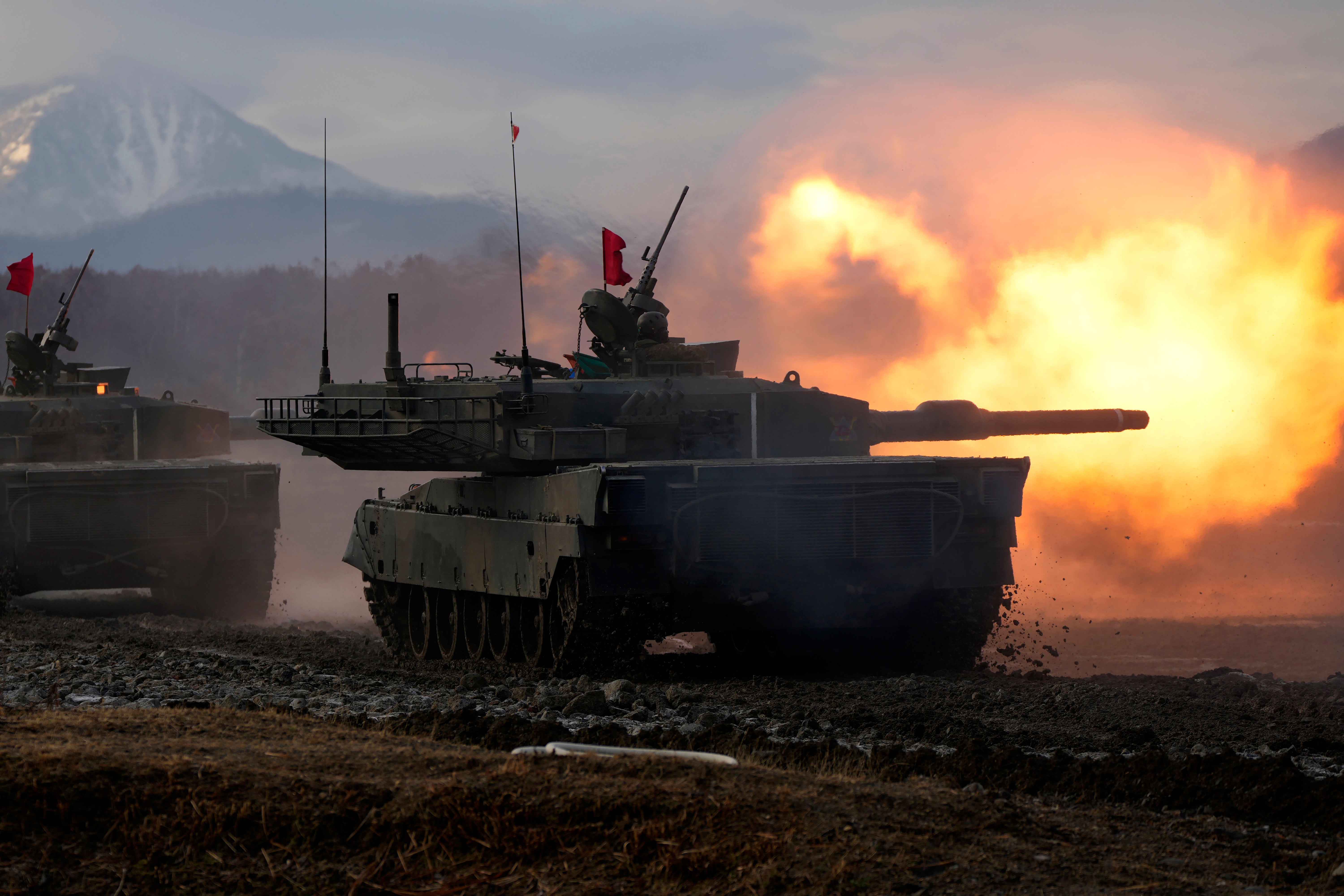Japan holds drills in north as it faces Russia, China threat
Japan's military has continued with troop and tank drills on its northern island of Hokkaido, as Tokyo looks to confront rising threats in the region, including from Russia and China

Your support helps us to tell the story
From reproductive rights to climate change to Big Tech, The Independent is on the ground when the story is developing. Whether it's investigating the financials of Elon Musk's pro-Trump PAC or producing our latest documentary, 'The A Word', which shines a light on the American women fighting for reproductive rights, we know how important it is to parse out the facts from the messaging.
At such a critical moment in US history, we need reporters on the ground. Your donation allows us to keep sending journalists to speak to both sides of the story.
The Independent is trusted by Americans across the entire political spectrum. And unlike many other quality news outlets, we choose not to lock Americans out of our reporting and analysis with paywalls. We believe quality journalism should be available to everyone, paid for by those who can afford it.
Your support makes all the difference.The earth shook and explosions boomed in the crisp winter air of Japan’s northern island of Hokkaido on Tuesday, as dozens of tanks and soldiers carried out drills at a Japanese army post that has long served to keep an eye on neighboring Russia while showcasing Japanese military prowess as Tokyo also faces China’s rise.
A team of four tanks, each carrying three soldiers, fired shells and machine guns at targets meant to represent enemy missiles, armored vehicles or humans as hundreds of fellow soldiers cheered on the sidelines and waved their unit flags.
The drills, which opened this week and continue through Dec. 14, involve about 1,300 Ground Self-Defense Force troops — about 550 of whom are completing the actual drills, according to the Northern Army Headquarters.
The drill focus on training soldiers for speed and accuracy in shooting targets that randomly appear from the range of 300 meters (984 feet) to 3 kilometers (1.9 miles) during a 15-minute session.
The training comes as China and Russia have stepped up military cooperation in recent years in an attempt to counter the region's U.S.-led bloc.
Among Japan’s biggest worries is China’s increased naval activity, which has prompted Tokyo to rapidly step up troop deployment and missile defenses across southern Japan, including on remote islands.
China’s buildup of military facilities in the South China Sea has heightened Tokyo’s concerns in the East China Sea, where the Japanese-controlled Senkaku islands are also claimed by Beijing, which calls them Diaoyu. China has sent a fleet of armed coast guard boats to routinely circle them and to go in and out of Japanese-claimed waters, sometimes chasing Japanese fishing boats in the area.
The result has been that Tokyo has shifted its focus on defense from northern to southern Japan in recent years. Heavy combat tanks and their units on Hokkaido — an old stronghold for Japanese forces — have also been reduced, as defense priorities have grown to include cyber, outer space and other tech dimensions.
But Hokkaido, with its large open spaces, remains an important training ground for Japanese troops, army officials said. Besides the northern island, Japan’s main tank exercise grounds are nearby Mount Fuji and Oita in the south.
Archconservative former premier Shinzo Abe significantly expanded Japan's military role and budget, during his more than eight-year rule, which ended in 2020. Japan has rapidly grown its role in its security alliance with Washington, and has made more purchases of costly American weapons and equipment, including fighter jets and missile interceptors.
Japanese Prime Minister Fumio Kishida, who took office in October, said during his first troop review that he would consider “all options,” including possibly pursuing pre-emptive strike capabilities to further “increase Japan’s defense power” — a divisive issue that opponents say violates the country's pacifist constitution.